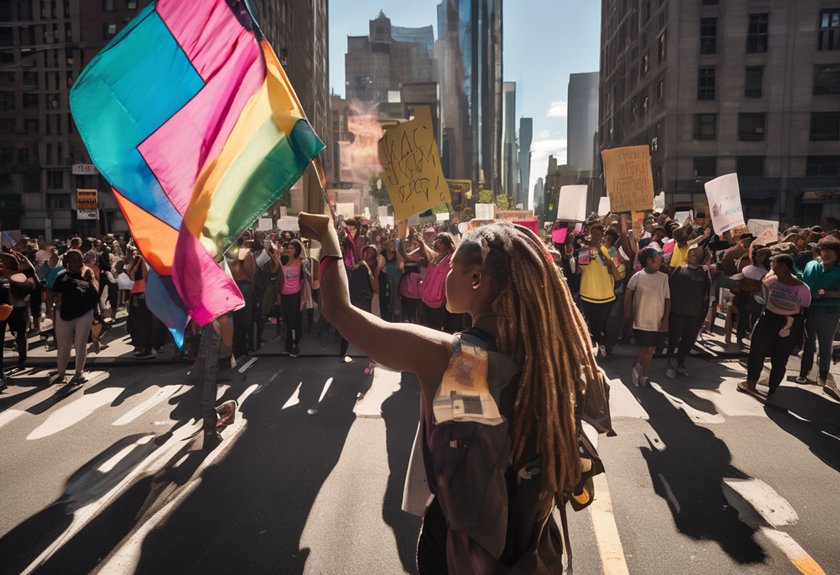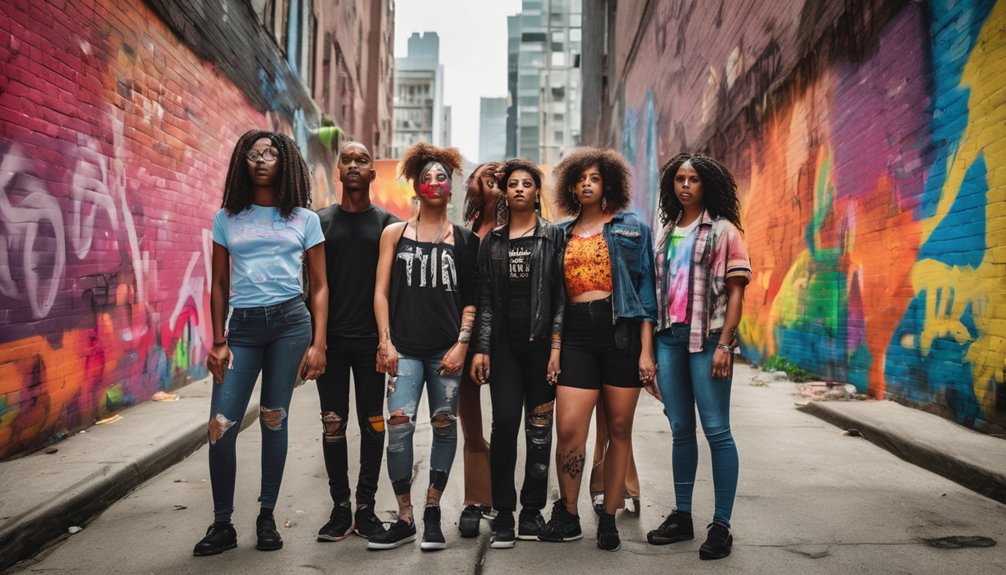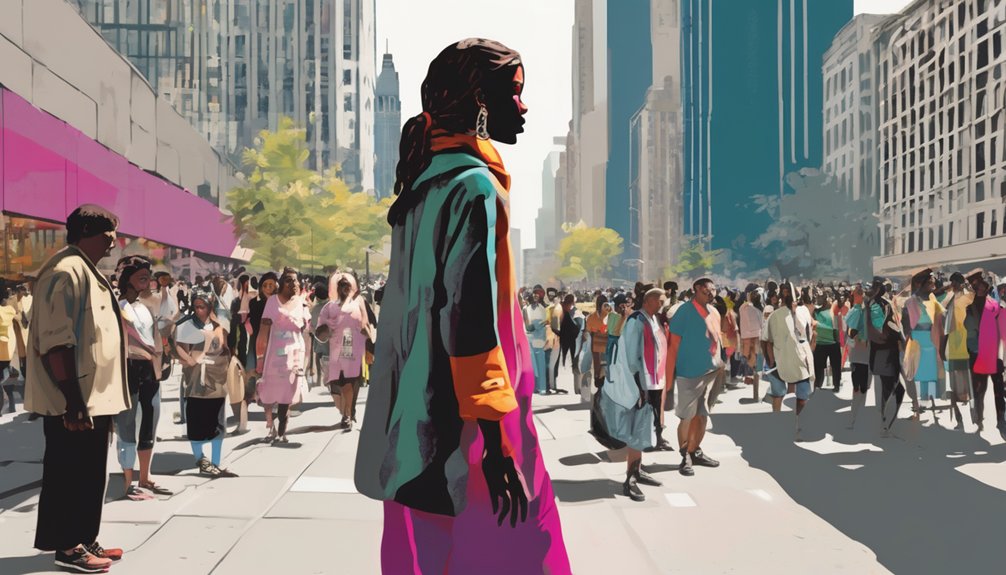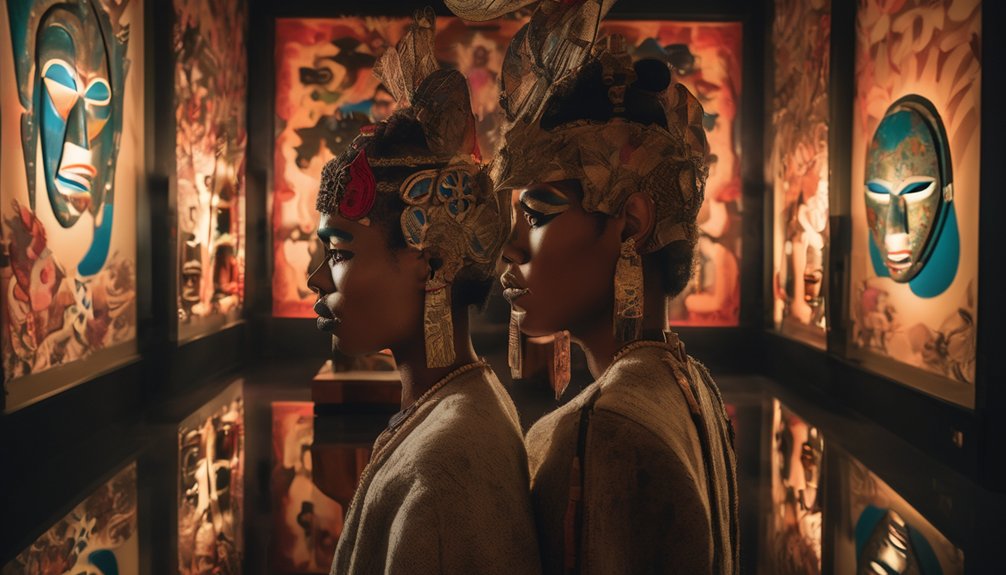What Is the Social Conflict Theory of Transgender People?


Table of Contents
ToggleThe social conflict theory of transgender people reveals the ongoing power struggles between established gender norms and the realities faced by transgender individuals. This theory underscores how rigid gender binaries create systemic inequalities, affecting access to essential resources like healthcare and employment. By examining these tensions, you can better understand the complexities of gender identity. What implications does this have for societal attitudes and policies toward transgender rights?

While social conflict theory provides a framework for understanding societal power struggles, its relevance to transgender issues becomes particularly evident when examining the tensions between traditional gender norms and the lived experiences of transgender individuals. This theory highlights how rigid gender binaries serve to marginalize transgender people, restricting their rights and access to vital resources. These power dynamics manifest in conflicts over resource allocation, such as healthcare and legal recognition, which are imperative for affirming their identities. Historical shifts in societal attitudes reveal that the fight for transgender rights challenges established norms, illustrating the ongoing struggle for recognition and equality. By analyzing these tensions, you can better understand how intersectionality compounds the challenges transgender individuals face within societal structures.

Although systemic inequalities affect numerous marginalized groups, transgender individuals experience a unique set of challenges that stem from entrenched societal structures. You may notice that healthcare access is severely limited for transgender people, as discrimination and misunderstanding from medical professionals often obstruct necessary gender-affirming care. Furthermore, economic disparities are evident; studies reveal that transgender individuals face higher unemployment rates and increased poverty compared to their cisgender peers. Structural barriers, including anti-transgender policies and a lack of legal recognition, further exacerbate these inequalities. The intersectionality of different identities, such as race and socioeconomic status, compounds these challenges, leading to varied experiences of oppression. Understanding these systemic inequalities is essential for addressing the needs and rights of transgender individuals effectively.

Systemic inequalities create a backdrop against which cultural narratives emerge, influencing how individuals perceive and express their gender identity. These narratives serve as cultural frameworks, shaping your understanding of gender beyond traditional binary definitions. Social media platforms, like Facebook, reflect this complexity by offering a range of gender identity options, acknowledging the nuanced spectrum of identity expression. Historical feminist scholarship underlines that gender roles are socially constructed, emphasizing the importance of cultural narratives in shaping perceptions. The visibility of trans narratives challenges existing societal norms, offering new insights into gender classifications. Furthermore, considering intersectionality allows you to grasp how these cultural narratives impact the experiences and empowerment of transgender individuals across different social contexts, highlighting their multifaceted identities.
As society increasingly recognizes the complexity of gender identity, advocacy for trans rights emerges as a critical response to longstanding inequalities. This advocacy not only seeks social and legal recognition but also drives fundamental policy changes that reflect diverse identities.
These factors collectively underscore the significance of advocacy in advancing trans rights and fostering social change.
Maneuvering power dynamics within gender discussions reveals the complexities that arise when traditional gender classifications confront the recognition of diverse identities. These power struggles highlight the entrenched gender hierarchies that often marginalize transgender individuals. As you engage in these dialogues, you may notice how societal structures resist change, perpetuating exclusion and limiting access to rights and public spaces. Intersectionality plays a critical role here, as many transgender individuals navigate overlapping identities that intersect with race and socioeconomic status, further complicating their experiences. Historical tensions between feminist movements and trans activism illustrate the ongoing conflict, as differing perspectives on gender and sex fuel debates about recognition and rights. Ultimately, amplifying trans narratives challenges these power structures, contributing to a more inclusive society.
The social conflict theory of gender examines the stark struggle between societal structures and power dynamics that perpetuate gender inequality. You’ll see how traditional norms dominate, sidelining those who defy them. This theory underscores the tension between privileged groups and marginalized identities, revealing how economic and political forces shape perceptions of gender. Ultimately, it advocates for a shift towards inclusivity, challenging rigid classifications and promoting a fairer, more equitable society for all genders.
The social learning theory of transgender people suggests that your gender identity develops through socialization processes where you observe and imitate others. You’re influenced by family, peers, and media representations, which can shape how you express your gender. Positive reinforcement from supportive role models can improve your self-acceptance, while societal norms may either reinforce traditional roles or promote fluidity. Both your experiences and those of others play significant roles in your identity formation.
The conflict theory of LGBTQ+ individuals highlights how identity politics shape social inequality. You’ll see that dominant groups maintain power by enforcing norms that marginalize sexual and gender minorities. This theory emphasizes the struggle for recognition and rights against systemic oppression, where LGBTQ+ communities challenge cultural and institutional barriers. By examining these dynamics, you can better understand the ongoing conflicts and the necessity for advocacy, which seeks to transform societal perceptions and policies.
An example of social conflict theory is the struggle faced by individuals with intersectional identities, such as transgender people of color, who confront systemic inequality. One observes this in the disparities they experience in healthcare, employment, and legal recognition compared to their cisgender counterparts. This conflict highlights how power dynamics shape societal structures, creating barriers for marginalized groups while emphasizing the need for systemic change to address these inequalities and foster inclusivity.
In exploring the social conflict theory as it pertains to transgender individuals, you uncover a critical lens through which to view systemic inequalities and cultural narratives. This theory not only highlights the struggles faced by transgender people but also challenges the validity of rigid gender norms. By advocating for social change, you contribute to a broader understanding of gender identity, revealing the necessity of dismantling oppressive structures to promote equity and justice within society.
 News and AdvocacyNovember 14, 2025Rainbow Victories: 2025’s Most Pro-LGBTQ+ States Revealed
News and AdvocacyNovember 14, 2025Rainbow Victories: 2025’s Most Pro-LGBTQ+ States Revealed News and AdvocacyNovember 14, 2025Transgender Sanctuary States: Protecting Rights, Providing Hope
News and AdvocacyNovember 14, 2025Transgender Sanctuary States: Protecting Rights, Providing Hope Featured PostsNovember 13, 2025When Restroom Policing Backfires: The Hotel That Went Too Far
Featured PostsNovember 13, 2025When Restroom Policing Backfires: The Hotel That Went Too Far Featured PostsNovember 13, 2025Sex, Safety, and Seduction: A Trans Girl’s Guide to Hookups
Featured PostsNovember 13, 2025Sex, Safety, and Seduction: A Trans Girl’s Guide to Hookups